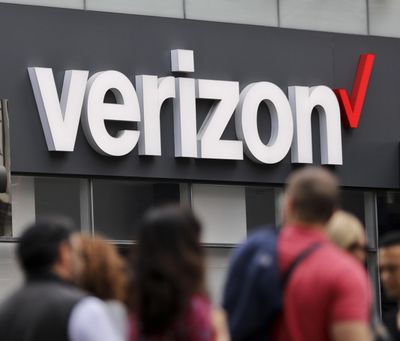2018 was the year of 5G hype. The 5G reality is yet to come.

When T-Mobile’s chief executive went before Senate lawmakers this year to make the case for his company’s merger with Sprint, he argued that the deal could help preserve U.S. dominance in high-tech wireless networks for smartphones and other devices.
“We’ll make sure America wins the global 5G race,” John Legere vowed. “5G will unlock capabilities that will fuel job creation and innovation well beyond what we have seen so far.”
T-Mobile isn’t the only carrier touting the amazing new capabilities of 5G, or fifth-generation data networks. The entire industry has spent much of the year marketing a dazzling future to consumers, one in which the successor to 4G LTE enables entirely new technologies, such as self-driving cars and remote medicine.
But despite the hype, 5G is still a long way from becoming a reality for everyday Americans. As companies such as AT&T and Verizon trade barbs over which one technically arrived first to the technology, analysts say the first 5G-capable smartphones won’t even arrive on the market until next year at the earliest. And with carriers largely switching on their 5G networks in select cities at first, it will take years for 5G to become as commonplace as 4G LTE is today.
“It’s encouraging to see American cellular providers really jumping out in the forefront and deploying aggressively these advanced networks which could have some real advantages for consumers,” said Glenn Derene, an editor at Consumer Reports. But Derene has little advice for shoppers who’ve asked him whether they should buy a 5G-capable phone. “When you look to the markets to see what a 5G phone is like, there aren’t any. Certainly, Consumer Reports can’t comment on how good these phones will be until we get them in our lab.”
In recent months, wireless carriers have made significant advances toward deploying 5G, though those achievements come with important caveats.
In October, Verizon announced that it had activated 5G service for customers in four cities. The product is not meant for use outside the home; instead, it’s being offered as a stand-in for residential Internet service. Still, it’s a potentially transformative offering – households with only one wired Internet provider might soon have an additional choice. But it isn’t “mobile data” in the way consumers tend to think of it.
AT&T has said it too had switched on its 5G service, announcing that it is the “first and only company in the U.S. to offer a mobile 5G device over a commercial, standards-based mobile 5G network.” The catch? Access is limited for now to a select group of businesses and consumers in a dozen cities, and it requires the use of a mobile hotspot.
For its part, Sprint says it plans to launch its mobile 5G service in the first half of next year. Until its merger with T-Mobile is approved and complete, executives have said, Sprint will continue to operate as though nothing has changed. A proposed deal recently received a blessing from national security officials, though it must also get approval from the Justice Department and the Federal Communications Commission.
As for when we’ll see the first 5G-capable smartphone? Industry analysts say the consensus appears to be the first quarter of 2019.
“I think the expectation is probably Samsung,” said Walt Piecyk, an analyst at the research firm BTIG.